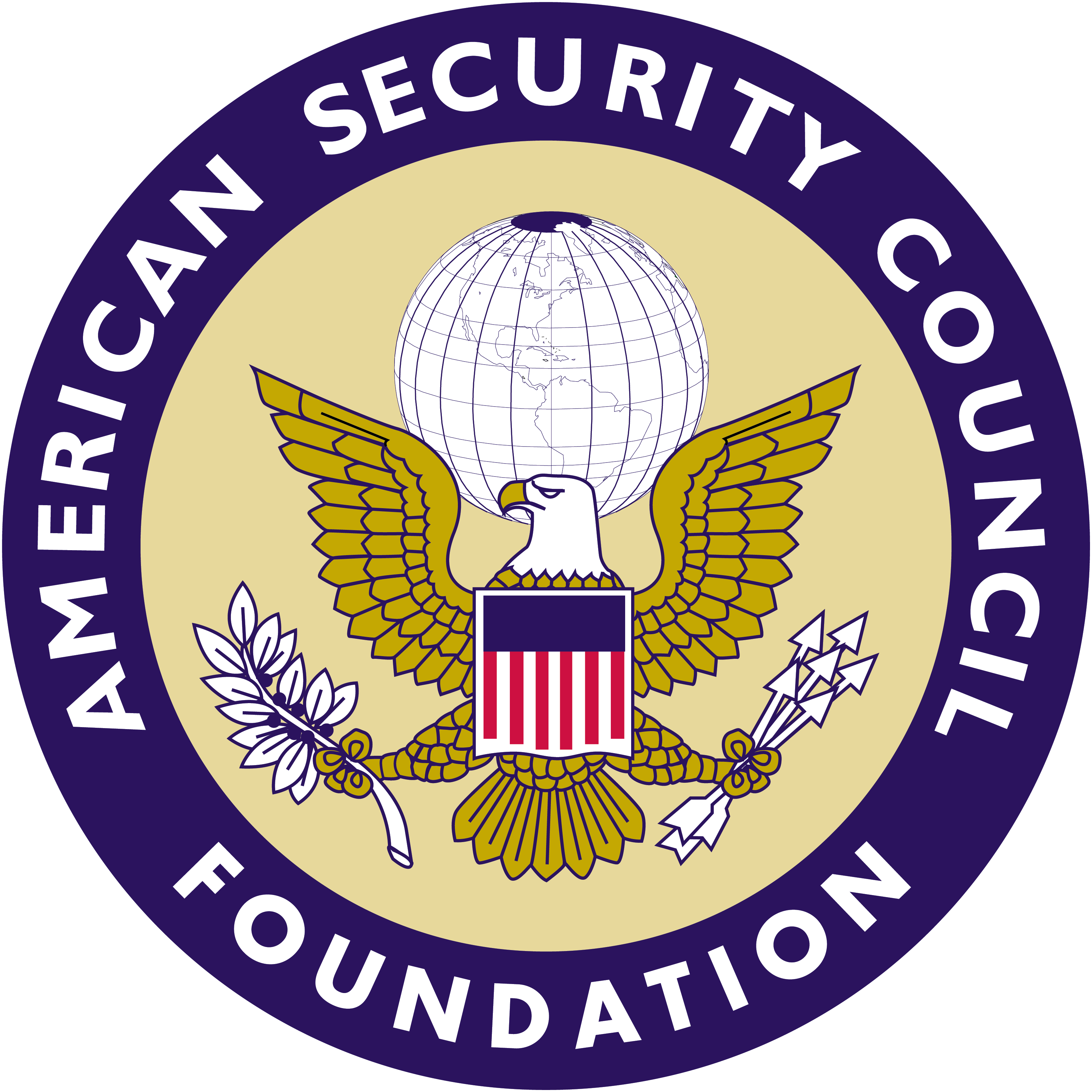American Security Council Foundation
last updated: January 14, 2017
Please note: The Militarist Monitor neither represents nor endorses any of the individuals or groups profiled on this site.

CONTACT INFORMATION
ASCF Headquarters
1300 Pennsylvania Ave. NW, Suite 700
Washington, DC 20004
Office: (202) 204-2541
NATIONAL SECURITY STRATEGY
The ASCF worked tirelessly to have the United States government publish an official National Security Strategy of the United States.This was first implemented by President Reagan in 1985, and all of his successors have been legally required to produce a similar document. The most recent National Security Strategy, published in February 2015, states: “Any successful strategy to ensure the safety of the American people and advance our national security interests must begin with an undeniable truth– America must lead. Strong and sustained American leadership is essntial to a rules-based international order that promotes global security and prosperity as well as the dignity and human rights of all peoples.”
BOARD (as of 2017)
Brig. Gen. Donald B. Smith, USA (Ret.), Chairman of the Board
RADM. Robert H. Spiro, Jr. , Chairman Emeritus, In Memoriam
Dr. Henry A. Fischer, President & CEO
Gen. Frederick Kroesen, USA (Ret.), First Vice President
Honorable David C. Nolte, Treasurer
Mrs. Betsy Fischer, Secretary
Mr. Robert D. Johnson
Honorable Bill McCollum
12th SMA Jack L. Tilley, USA (Ret.), Senior Advisory Board
Governor George Pataki
13th CMSAF Frederick ”Jim” Finch, USAF (Ret.)
9th MCPON James Herdt, USN (Ret.)
14th SMMC Alford L. McMichael, USMC (Ret.)
8th MCPOCG Vincent W. Patton, USCG (Ret.)
Mr. Xavier I. Piedra
Mr. Jeff Luther
The American Security Council Foundation (ASCF) has been a leading anti-communist group since the 1950s. The current organization resulted from a merger between the ASCF and the similarly named American Security Council (ASC) in the 1990s. The ASC was once described as the “heart and soul of the military-industrial complex” because of its strong backing from and support for top defense contractors in the post-World War II era.[1] Notable members and supporters of the group have included Jeane Kirkpatrick, John S. Foster, Jr., William Van Cleave, Clare Booth Luce, atomic physicists Edward Teller and Eugene Wigner, and Charles Burton Marshall.
Founded in the 1950s by General Robert Wood, a decorated World War I veteran who help build the Sears Roebuck retail empire, and the Chicago Tribune‘s Robert R. McCormick, the ASC was originally associated with old-guard isolationist conservatism in the United States. An outgrowth of McCarthyism, the ASC focused its early work on fighting purported communists in the U.S. government and championing the work of Sen. Joseph McCarthy during the Red Scare. By the 1970s, however, the ASC had become closely associated with anti-détente forces and other political factions advocating militarist U.S. defense policies.[2]

An original impetus for the creation of the ASC was General Wood’s conviction that the United States had “lost” the Korean War because of “internal subversion.” With financial support from such companies as Sears and Motorola, the group collected extensive files on people suspected of having communist sympathies, going “so far as attempting to obtain Joe McCarthy’s files after his demise in order to pick up where the censured senator had left off.”[3]
In the mid-1970s, the ASC, under the leadership of retired FBI agent and Sears executive John Fisher, spearheaded the creation of the Coalition for Peace through Strength, a hardline anti-Soviet umbrella group that lobbied for the expansion of the military budget and fought passage of arms control agreements like the SALT nuclear treaties.[4]
According to a history of the ASC penned by Fisher, the “Peace Through Strength” motto was inspired by “the ‘Peace is our Profession’ sign over the entrance to the Strategic Air Command headquarters which [he] saw when he went there twice, with camera crew, to interview SAC Commanders in their hardened command center.”[5]
(The “Peace Through Strength” motto remains a rallying cry for hawkish wonks and politicians, including serving as the maxim for the neoconservative Center for Security Policy, founded by Reagan-era Pentagon official Frank Gaffney.)
According to Fisher, the decision to change the group’s mission and focus on external threats and U.S. defense policy was spurred by the Cuban revolution and Fidel Castro’s “success in taking over Cuba for Communism.”[6] This event “was of particular interest to American business because the Cuban branches of major companies, like Sears, were nationalized without compensation. This shifted the ASC’s interest to defense and foreign policy issues. It broadened its mission to that of changing the U.S. strategy goal to that of ‘defend and extend freedom’ to replace the failing U.S. strategy variously called containment, accommodation, détente and convergence.”[7]
Historian Jerry Sanders argues that the ASC-led Coalition for Peace Through Strength represented a significant accomplishment in that it successfully brought together several disparate political factions behind a shared foreign policy agenda: “A perusal of the Coalition’s membership, both its Congressional and ‘private sector’ branches reveals that what the ASC had indeed accomplished was to draw together the New Right, neoconservatives, the Cold Warrior elite, and its own military-industrial operation into one formidable coalition.”[8] In addition to many corporate backers, coalition members and associates included various people associated with the 1970s version of the Committee on the Present Danger, a bipartisan group of politicians like Jesse Helms and Jack Kemp, as well as members of the notorious Team B exercise (George Keegan and William Van Cleave).[9]
(The coalition-building work of the Coalition for Peace Through Strength prefigured similar efforts by neoconservatives at the end of the Cold War to bring together various political factions in support of a renewed U.S. overseas military agenda, particularly under the banner of the Project for the New American Century, founded by William Kristol and Robert Kagan.)
By the early 1980s, the ASC, still under the leadership of John Fisher, was being described as the “educational arm”[10] of the American Security Council Foundation (ASCF) That group was originally founded under the name the Institute for American Strategy in the late 1950s, with the goal of pushing the United States to aggressively roll back Soviet influence around the world by adopting a policy of “protracted conflict.”[11]
A key ASC-ASCF initiative was the militarist advocacy agenda it promoted in the 1984 publication A Strategy for Peace Through Strength. According to John Fisher, the Reagan administration’s adoption of this platform resulted in the United States “winning” the Cold War.[12] Among the core aspects of this strategy were building the Star War missile defense system and rolling back communism in places like Nicaragua.[13]
According to Fisher, ASF and ASCF formally merged in 1997. He claims that at that time the ASCF dropped “foundation” from its name and simply became the American Security Council.[14] At some later date, ASC reverted to ASCF. In 2010, it was operating as a 501(c)(3) organization promoting “the necessity of maintaining military, economic and diplomatic strength.”[15]
